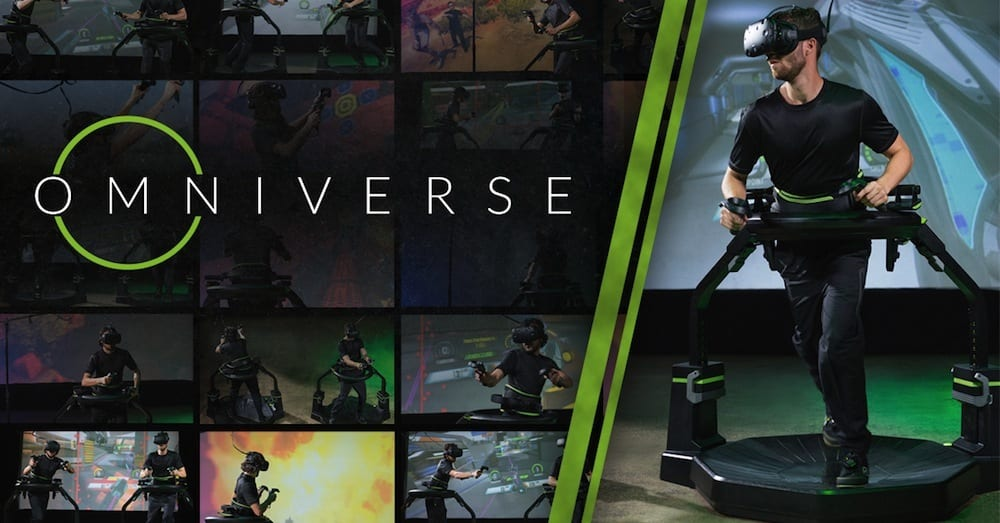Background
Developing games that require locomotion is a significant challenge in virtual reality, as freedom of movement is restricted by cables on a tethered headset and transmitter signal strength on a wireless headset. Furthermore, movement is also constrained to the dimensions of the physical space in which movement is occurring.
To circumvent this problem, companies and research labs have developed solutions that allow user’s to move through a virtual environment while remaining stationary. In this post, i’ll highlight two of the most popular locomotion techniques in VR: treadmills and stationary exercise bikes.
Treadmills
Virtuix ( https://www.virtuix.com/ ) was one of the first companies to tread into the space of VR locomotion with a kickstarter campaign in June 2013.5 The Virtuix Omni is an omni-directional treadmill that allows users 360 degrees freedom of movement. A brief description of the system is below:
“To use the Omni system, players wear special overshoes which stretch to fit over normal footwear. The player is held in place by a comfortable but firm harness. The HTC Vive VR headset is dropped down from above each player, so no wires get in the way to disrupt the VR illusion. The players’ feet slide along the plastic dish under their feet, while inside the simulation, they move forward, providing the unique full immersion of free roam VR in a much, much smaller space.”1

Other VR treadmills include:2,3,4
KatVR (
https://katvr.com/)
Cyberith Virtualizer (
https://www.cyberith.com/)
Omnideck (
http://omnifinity.se/)
Infinadeck (
https://www.infinadeck.com/)
The Aperium Pod (
http://aperiumreality.com/index.php/en/home/)
Spacewalker VR (
http://www.spacewalkervr.com/)
The KatVR, Cyberith Virtualizer, Aperium Pod, and Spacewalk VR are considered “slidemills”, as they require the user to slide their feet against a platform to engage in locomotion. The omnideck and infinideck are equipped with a variable-speed treadmill platform that utilizes positional feedback to ensure the user is always located near the center of the platform.
Stationary Exercise Bikes
In 2016, VirZoom ( https://www.virzoom.com/) released the first stationary exercise bike designed to support locomotion in VR. The bike (pictured below) is equipped with a number of buttons on the handlebars, making it well-suited for gaming and exercise.

NordicTrack VR ( https://www.cnet.com/news/nordictracks-vr-fitness-bike-wore-me-out-at-ces/)
References
- https://www.virtuix.com/virtuix-omni-rides-vr-esports-explosion-to-one-million-plays/
- https://packet39.com/blog/2018/03/25/vr-treadmill-overview-march-2018/
- https://www.vrfitnessinsider.com/vr-omnidirectional-treadmills-making-gains-towards-full-immersion-and-cardio/
- https://www.aniwaa.com/blog/best-vr-treadmills-vr-slidemills/
- https://en.wikipedia.org/wiki/Virtuix_Omni